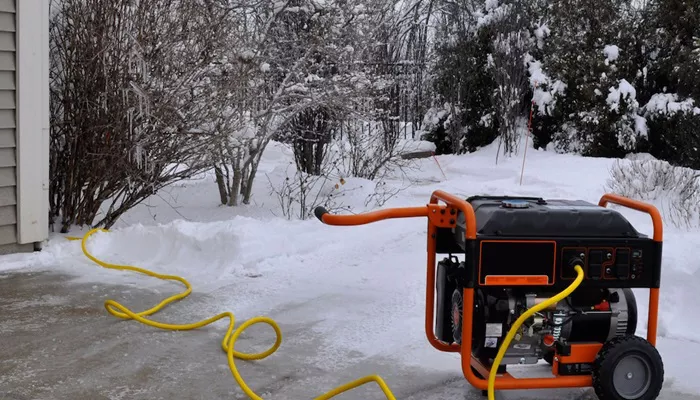Choosing the right size for a home generator is crucial to ensure your household runs smoothly during a power outage. A generator that’s too small won’t power all your essential appliances, while one that’s too large wastes fuel and money. This guide will help you determine the correct generator size based on your home’s electrical needs.
Understanding Generator Sizing Basics
Generators are rated in watts (W) or kilowatts (kW), which measure electrical power. To find the right size, you must calculate your home’s total wattage demand, including:
- Starting (Surge) Watts – Extra power needed when motors (like refrigerators or AC units) start up.
- Running (Continuous) Watts – Steady power required to keep appliances running.
- Generators must handle both surge and continuous wattage to avoid overload.
List Essential Appliances
First, identify which appliances you need during an outage. Common essentials include:
- Refrigerator (600-800 running watts, 1,200-2,200 starting watts)
- Sump pump (800-1,500 running watts, 2,000+ starting watts)
- Furnace fan (500-1,200 running watts)
- Lights (60-600 watts total, depending on bulbs)
- Microwave (600-1,200 running watts)
- Window AC unit (500-1,500 running watts, higher starting watts)
- Well pump (1,000-2,000 running watts, 2,000-4,000 starting watts)
If you want whole-house backup, include larger loads like:
- Central AC (2,000-5,000 running watts, higher surge)
- Electric water heater (3,000-4,500 running watts)
- Electric stove (1,500-3,000 running watts)
Choose Between Portable and Standby Generators
Portable Generators (3,000 – 10,000 watts)
- Best for partial home backup (essential appliances only).
- Require manual setup and extension cords.
- Fuel options: Gasoline, propane, or dual-fuel.
Standby Generators (7,000 – 24,000+ watts)
- Automatic operation (kicks in during outages).
- Powers entire homes, including central AC and electric heating.
- Runs on natural gas or propane.
- Requires professional installation.
Consider Fuel Efficiency and Runtime
- Smaller generators (3,000-5,000W) use less fuel but may not handle large appliances.
- Larger generators (10,000W+) consume more fuel but support whole-house needs.
- Inverter generators are more fuel-efficient for smaller loads.
Common Mistakes to Avoid
- Underestimating Surge Watts – Motors (like AC or fridge compressors) need extra power at startup.
- Overloading the Generator – Running too many appliances at once can damage the generator.
- Ignoring Voltage Requirements – Large appliances (well pumps, electric dryers) may need 240V support.
Final Recommendation
- Small Homes / Essentials Only: 5,000-7,500W portable generator
- Medium Homes (Partial Backup): 7,500-10,000W standby generator
- Large Homes (Full Backup): 15,000-24,000W standby generator
For the most accurate sizing, consult an electrician to perform a load calculation.
Conclusion
Selecting the right generator size depends on your home’s power demands. By calculating running and surge watts, choosing between portable and standby models, and avoiding common mistakes, you can ensure reliable backup power during outages. Always prioritize safety and consult a professional if unsure. Would you like recommendations for specific generator brands or models based on your needs? Let us know in the comments!

